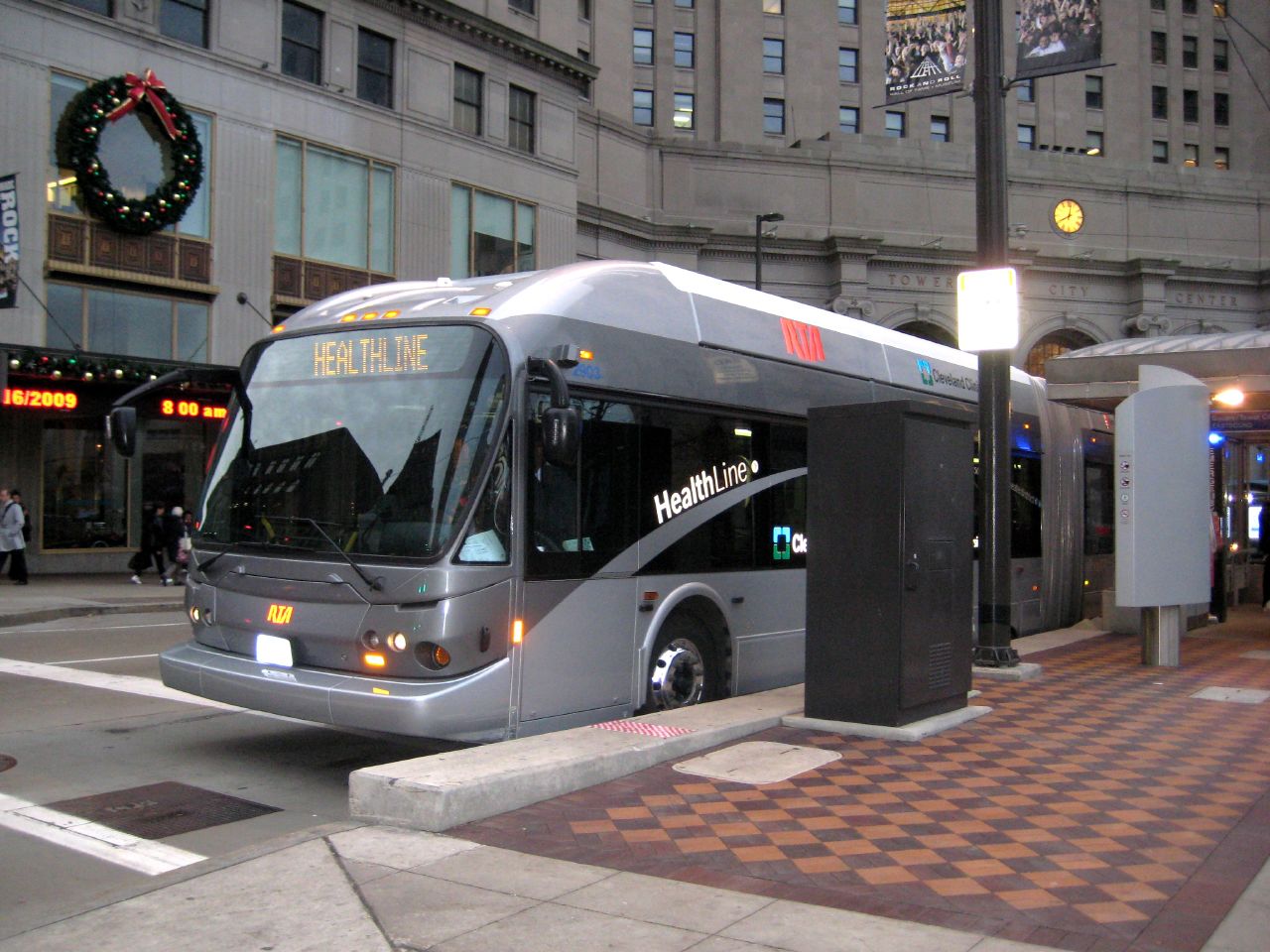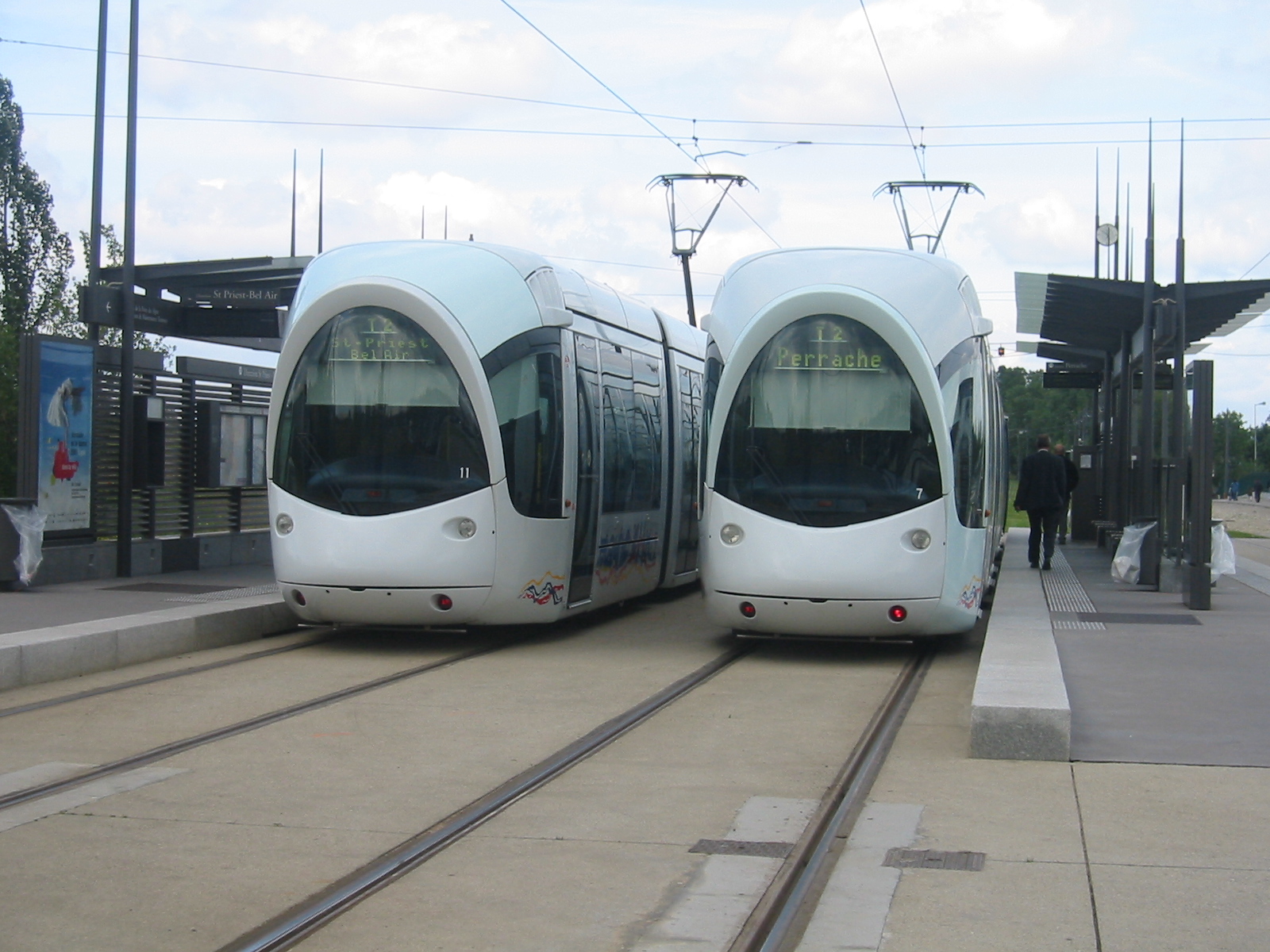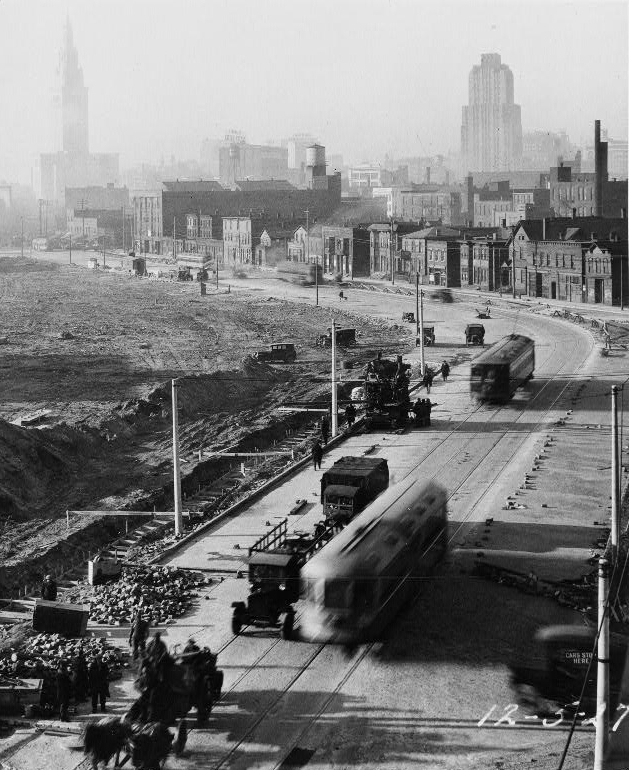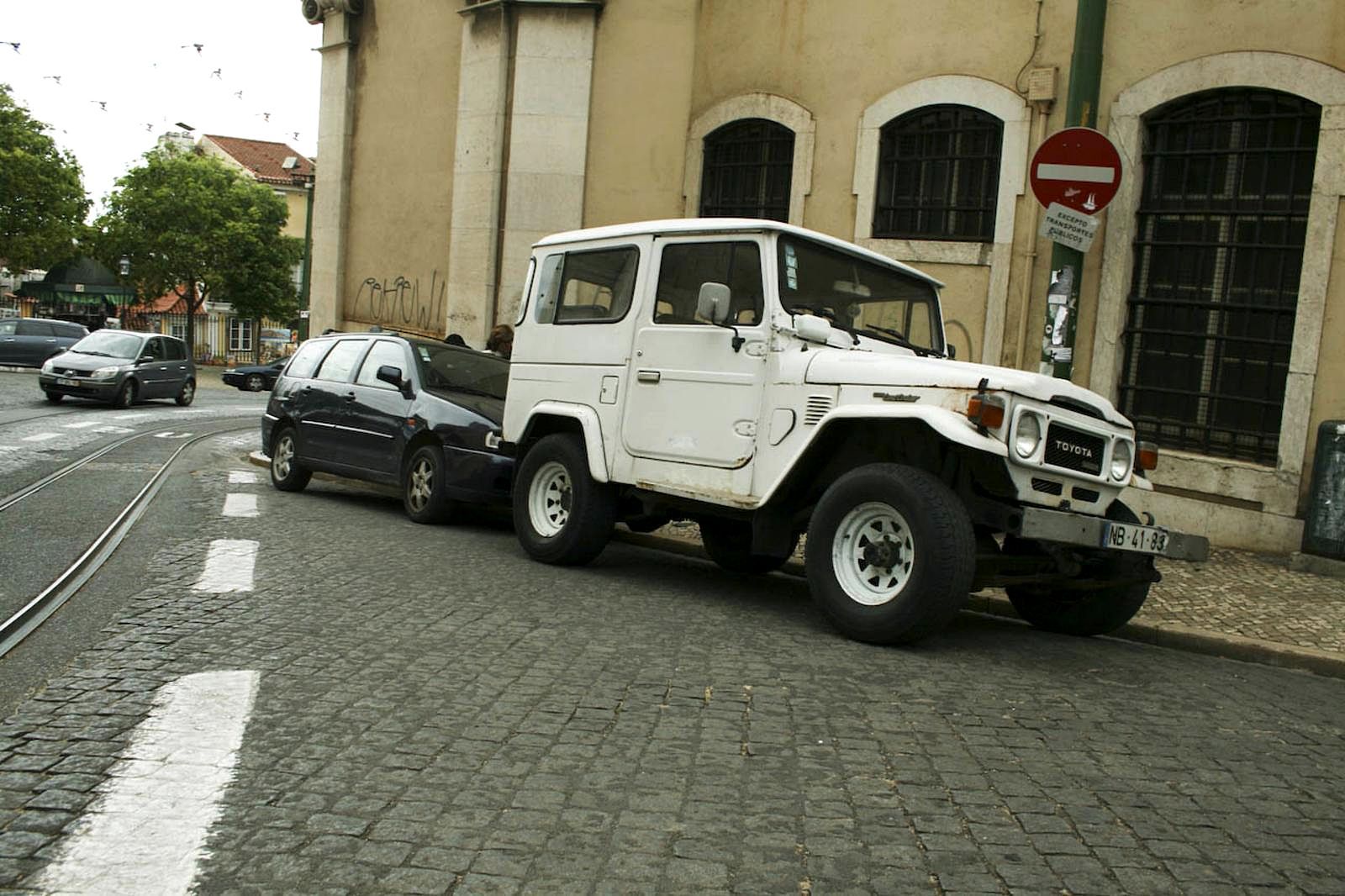|
Lynnfield Station
Lynnfield station is a stop on the RTA Blue Line in Shaker Heights, Ohio, located in the median of Van Aken Boulevard at its intersection with Lynnfield Road, after which the station is named, along with Parkland Drive and Norwood Road. History The station opened on April 11, 1920, with the initiation of rail service by the Cleveland Interurban Railroad on what is now Van Aken Boulevard from here to Shaker Square and then to East 34th Street and via surface streets to downtown. At the time, Lynnfield was the end of the line. In 1923 the station building was built at a cost of $17,926 to provide a waiting room for passengers. It also housed tobacco and newspaper stands. The newspapers were delivered to the station by rapid transit. The building included outside shelters on both sides. After the line was extended to Warrensville Center Road in 1930, Lynnfield no longer functioned as the end of the line and the station building was not needed. The building was leased to a se ... [...More Info...] [...Related Items...] OR: [Wikipedia] [Google] [Baidu] |
Shaker Heights, Ohio
Shaker Heights is a city in Cuyahoga County, Ohio, United States. As of the 2020 Census, the city population was 29,439. Shaker Heights is an inner-ring streetcar suburb of Cleveland, abutting the eastern edge of the city's limits. In July 1911, a petition by property owners was successful in detaching a long strip of land from the south of Cleveland Heights, to be named Shaker Village. In November 1911, the voters of Shaker Village formed Shaker Heights Village, which was incorporated in January 1912. It is the birthplace of the actor Paul Newman. Shaker Heights was a planned community developed by the Van Sweringen brothers, railroad moguls who envisioned the community as a suburban retreat from the industrial inner city of Cleveland. Geography Topography Shaker Heights is located at . According to the United States Census Bureau, the city has a total area of , of which is land and is water. Shaker Heights is roughly 1,050 feet (320 m) above sea level, and is located ab ... [...More Info...] [...Related Items...] OR: [Wikipedia] [Google] [Baidu] |
Greater Cleveland Regional Transit Authority
The Greater Cleveland Regional Transit Authority (officially the GCRTA, but historically and locally referred to as the RTA) is the public transit agency for Cleveland, Ohio, United States and the surrounding suburbs of Cuyahoga County. RTA is the largest transit agency in Ohio, providing over 44 million trips to residents and visitors of the Cleveland area in 2010. RTA owns and operates the RTA Rapid Transit rail system (called "The Rapid" by area residents), which consists of one heavy rail line (the Red Line) and three light rail lines (Blue, Green, Waterfront). The bulk of RTA's service consists of buses, including regular routes, express or ''flyer'' buses, loop and paratransit buses. In December 2004, RTA adopted a revised master plan, Transit 2025, in which several rail extensions, bus line improvements and transit oriented developments are discussed. In , the system had a ridership of , or about per weekday as of . RTA's major predecessor, the Cleveland Transit System ... [...More Info...] [...Related Items...] OR: [Wikipedia] [Google] [Baidu] |
Blue Line (Cleveland)
The Blue Line (formerly known as the Moreland Line and the Van Aken Line) is a light rail line of the RTA Rapid Transit system in Cleveland and Shaker Heights, Ohio, running from Tower City Center downtown, then east and southeast to Warrensville Center Blvd near Chagrin Blvd. of track, including two stations ( Tri-C–Campus District and East 55th), are shared with the rapid transit Red Line, the stations have low platforms for the Blue Line and high platforms for the Red Line. The Blue Line shares the right-of-way with the Green Line in Cleveland, and splits off after passing through Shaker Square. All RTA light rail lines use overhead lines and pantographs to draw power. Interurban portion From Tower City to just east of East 55th Street, the Blue and Green Lines share track with the Red Line for 2.6 miles (4.2 km) along a private right-of-way originally acquired in 1930 to bring intercity trains into Cleveland Union Terminal (the site of today's Tower City Center ... [...More Info...] [...Related Items...] OR: [Wikipedia] [Google] [Baidu] |
Side Platforms
A side platform (also known as a marginal platform or a single-face platform) is a platform positioned to the side of one or more railway tracks or guideways at a railway station, tram stop, or transitway. A station having dual side platforms, one for each direction of travel, is the basic design used for double-track railway lines (as opposed to, for instance, the island platform where a single platform lies between the tracks). Side platforms may result in a wider overall footprint for the station compared with an island platform where a single width of platform can be shared by riders using either track. In some stations, the two side platforms are connected by a footbridge running above and over the tracks. While a pair of side platforms is often provided on a dual-track line, a single side platform is usually sufficient for a single-track line. Layout Where the station is close to a level crossing (grade crossing) the platforms may either be on the same side of the cross ... [...More Info...] [...Related Items...] OR: [Wikipedia] [Google] [Baidu] |
Cleveland Railway (Ohio)
The Cleveland Railway Company was the public transit operator in Cleveland, Ohio, from 1910 to 1942. The company began operations with assets of the former Forest City Railway, which operated from 1906 to 1909. The company owned a fleet of PCC streetcars. Though National City Lines never owned the system in Cleveland, General Motors did negotiate the sale of buses to the city, resulting in the shutdown of the streetcar system. In Cleveland, complaints were made to the FBI after the mayor and city councilors were seen driving around in new General Motors cars. Mayor Ray T. Miller did receive a new car within a month of General Motors' winning the contract for new buses. The FBI refused to investigate based on high-profile nature of the people targeted. The city of Cleveland bought out Cleveland Railway in 1942 and used it as the nucleus for the Cleveland Transit System, the precursor to the current Greater Cleveland Regional Transit Authority. The Cleveland streetcars were s ... [...More Info...] [...Related Items...] OR: [Wikipedia] [Google] [Baidu] |
Tram Stop
A tram stop, tram station, streetcar stop, or light rail station is a place designated for a tram, streetcar, or light rail vehicle to stop so passengers can board or alight it. Generally, tram stops share most characteristics of bus stops, but because trams operate on rails, they often include railway platforms, especially if stepless entries are provided for accessibility. However, trams may also be used with bus stop type flags and with mid-street pavements as platforms, in street running mode. Examples Most tram or streetcar stops in Melbourne and Toronto and other systems with extensive sections of street-running have no associated platforms, with stops in the middle of the roadway pavement. In most jurisdictions, traffic cannot legally pass a tram or streetcar whose doors are open, unless the tram is behind a safety zone or has a designated platform. On the other hand, several light rail systems have high-platform stops or stations with dedicated platforms at railway ... [...More Info...] [...Related Items...] OR: [Wikipedia] [Google] [Baidu] |
Blue Line (RTA Rapid Transit)
The Blue Line (formerly known as the Moreland Line and the Van Aken Line) is a light rail line of the RTA Rapid Transit system in Cleveland and Shaker Heights, Ohio, running from Tower City Center downtown, then east and southeast to Warrensville Center Blvd near Chagrin Blvd. of track, including two stations ( Tri-C–Campus District and East 55th), are shared with the rapid transit Red Line, the stations have low platforms for the Blue Line and high platforms for the Red Line. The Blue Line shares the right-of-way with the Green Line in Cleveland, and splits off after passing through Shaker Square. All RTA light rail lines use overhead lines and pantographs to draw power. Interurban portion From Tower City to just east of East 55th Street, the Blue and Green Lines share track with the Red Line for 2.6 miles (4.2 km) along a private right-of-way originally acquired in 1930 to bring intercity trains into Cleveland Union Terminal (the site of today's Tower City Center ... [...More Info...] [...Related Items...] OR: [Wikipedia] [Google] [Baidu] |
Shaker Rapid Lynnfield 1922
Shaker or Shakers may refer to: Religious groups * Shakers, a historically significant Christian sect * Indian Shakers, a smaller Christian denomination Objects and instruments * Shaker (musical instrument), an indirect struck idiophone * Cocktail shaker, a device used to mix beverages (usually alcoholic) by shaking * Shaker (salt and pepper), condiment dispensers designed to allow diners to distribute grains of edible salt and ground peppercorns * Shaker (laboratory), a device used to stir liquids in chemistry and biology * Shaker (testing device), a vibration device used in endurance testing or modal testing * Shaker scoop, an auto component * Shale shakers, a type of solids control equipment Music * Shaker (musical instrument), an indirect struck idiophone * Shaker (Lil Shaker), a Ghanaian recording artist, songwriter, producer and performer * The Shakers (band) a pseudonym for the band Kingsize Taylor and the Dominoes * Los Shakers, a Uruguayan band * ''Shaker'' (Da ... [...More Info...] [...Related Items...] OR: [Wikipedia] [Google] [Baidu] |
Shaker Square (RTA Rapid Transit Station)
Shaker Square is a station on the RTA Blue and Green Lines in Cleveland, Ohio. It is the first station west of the junction of the Blue and Green Lines and thus serves as a transfer point between the two lines. The station is at street level on the western side of Shaker Square. It marks the dividing point between the line's grade-separated portion and its at-grade portion, with trains running on a grade separated right-of-way west of this station to Tower City and running at-grade along the medians of boulevards east of this station. Fares are collected on the train for passengers leaving the train westbound or boarding the train eastbound. There is no parking directly at the Shaker Square station, though there is parking in the area, and parking is also available at the Blue Line Drexmore station at the eastern edge of the Shaker Square development area. History On April 11, 1920, the predecessor of what is now the Blue Line began operation through Moreland Circle, then ... [...More Info...] [...Related Items...] OR: [Wikipedia] [Google] [Baidu] |
Parking
Parking is the act of stopping and disengaging a vehicle and leaving it unoccupied. Parking on one or both sides of a road is often permitted, though sometimes with restrictions. Some buildings have parking facilities for use of the buildings' users. Countries and local governments have rules for design and use of parking spaces. Car parking is essential to car-based travel. Cars are typically stationary around 95 per cent of the time. The availability and price of car parking supports and subsidize car dependency. Car parking uses up a lot of urban land, especially in North America - as much as half in many North American city centers. Parking facilities Parking facilities can be divided into public parking and private parking. * Public parking is managed by local government authorities and available for all members of the public to drive to and park in. * Private parking is owned by a private entity. It may be available for use by the public or restricted to custom ... [...More Info...] [...Related Items...] OR: [Wikipedia] [Google] [Baidu] |
Median (road)
The median strip, central reservation, roadway median, or traffic median is the reserved area that separates opposing lanes of traffic on divided roadways such as divided highways, dual carriageways, freeways, and motorways. The term also applies to divided roadways other than highways, including some major streets in urban or suburban areas. The reserved area may simply be paved, but commonly it is adapted to other functions; for example, it may accommodate decorative landscaping, trees, a median barrier, or railway, rapid transit, light rail, or streetcar lines. Regional terminology There is no international English standard for the term. Median, median strip, and median divider island are common in North American and Antipodean English. Variants in North American English include regional terms such as neutral ground in New Orleans usage. In British English the central reservation or central median the preferred usage; it also occurs widely in formal documents in some ... [...More Info...] [...Related Items...] OR: [Wikipedia] [Google] [Baidu] |
Railway Stations In The United States Opened In 1920
Rail transport (also known as train transport) is a means of transport that transfers passengers and goods on wheeled vehicles running on rails, which are incorporated in tracks. In contrast to road transport, where the vehicles run on a prepared flat surface, rail vehicles (rolling stock) are directionally guided by the tracks on which they run. Tracks usually consist of steel rails, installed on sleepers (ties) set in ballast, on which the rolling stock, usually fitted with metal wheels, moves. Other variations are also possible, such as "slab track", in which the rails are fastened to a concrete foundation resting on a prepared subsurface. Rolling stock in a rail transport system generally encounters lower frictional resistance than rubber-tyred road vehicles, so passenger and freight cars (carriages and wagons) can be coupled into longer trains. The operation is carried out by a railway company, providing transport between train stations or freight customer facilit ... [...More Info...] [...Related Items...] OR: [Wikipedia] [Google] [Baidu] |






